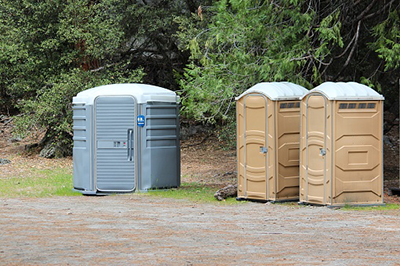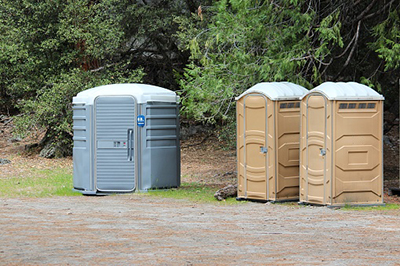
ADA and Handicap-Accessible Portable Restroom Regulations
Many of your customers won’t be aware of the differences between ADA and handicap-accessible portable restrooms. Because of this, it’s important that you know what they are so you are able to explain it to them when they’re making product selections.
Depending on the customer, you may not be able to use ADA and handicap-accessible portable restrooms interchangeably. For example, some government entities may specifically request ADA-compliant units to meet requirements. Read on to learn about the key regulations pertaining to each type of portable toilet.
Handicap-Accessible Portable Restrooms
The requirements for handicap-accessible portable restrooms are as follows:
- A wider door than a standard unit to allow wheelchair accessibility
- A ramped entrance to accommodate wheelchairs
- nough interior space to allow the user to perform a three-point turn in their wheelchair
These criteria apply to handicap-accessible units but do NOT make them ADA-compliant as well. As an example, a handicap-accessible toilet door is not required to be hinged, which makes it difficult to close unassisted.
ADA Regulations for Portable Restrooms
The Americans with Disabilities Act (ADA), 1990 outlined regulations that applied to portable restroom accessibility. They are more in-depth than regulations that apply to handicap-accessible portable restrooms. In addition to the requirements listed in the previous section, an ADA-compliant portable restroom must also meet these requirements:
- At least 1 ADA-compliant portable toilet for every 20 portable toilets on a site, including at least 1 ADA unit in every toilet cluster
- Hinged or magnetic doors for easier closing
- Reinforced unit construction and reinforced interior grab bars
- A placard displayed on the outside of the unit indicating that it’s ADA-compliant — usually a blue wheelchair sign with braille
- Enough space for a 360-degree turn
The last point is very important because it is one of the features that most distinguishes an ADA unit from a handicap-accessible unit. ADA portable toilets must be larger, meaning they cost more to purchase and rent and that more space will need to be accounted for on the delivery truck.
You may also find it useful to offer handicap-accessible portable sinks that are operated by hand pumps instead of foot pumps.
ADA regulations are required to be upheld in certain locations, but not all. The regulations will differ depending on the city and state, so do your homework and make sure you understand the laws.
Summary
There you have it! The main thing to remember is that an ADA-compliant portable restroom accounts for all aspects of the Americans with Disabilities Act while a handicap-accessible portable restroom does not. Make sure your customers clearly understand this when you are discussing their portable toilet needs.
Knowledge is key in this industry. Avoid making mistakes and renting out the incorrect portable toilets by staying informed of all rules and regulations.
